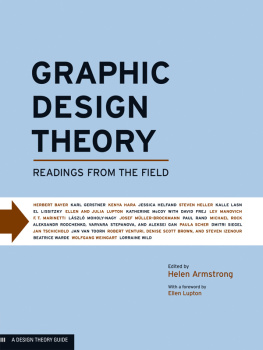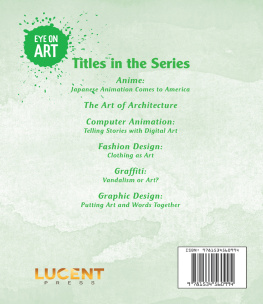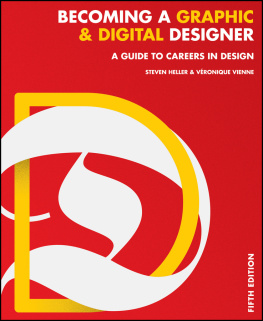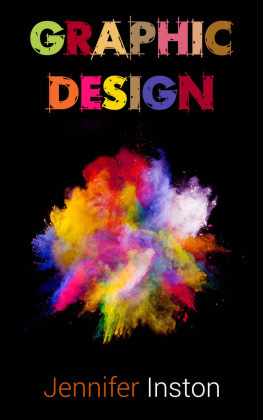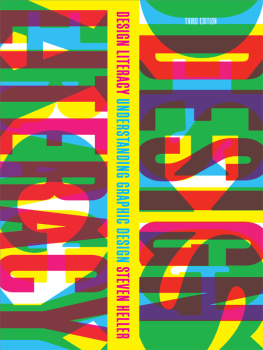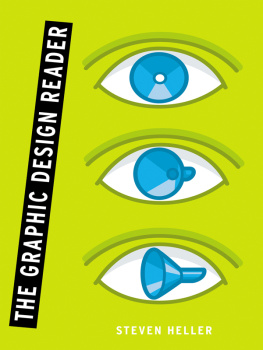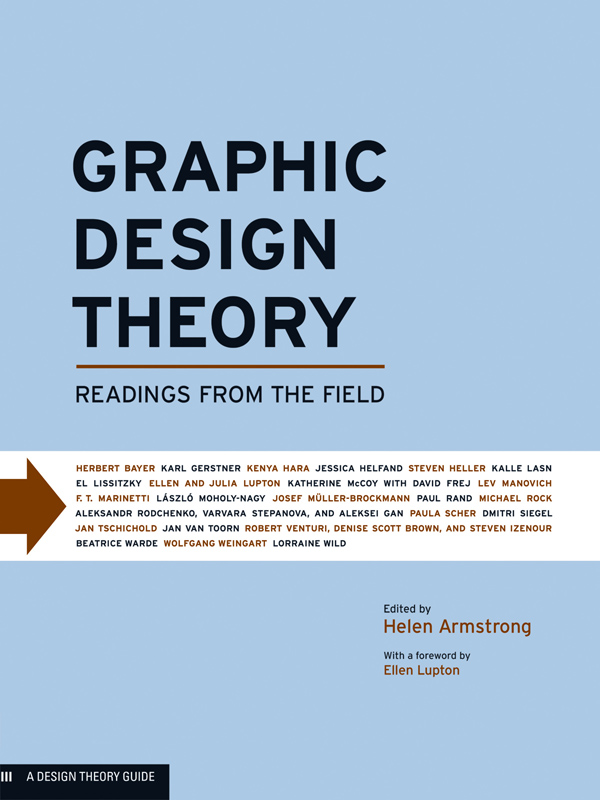
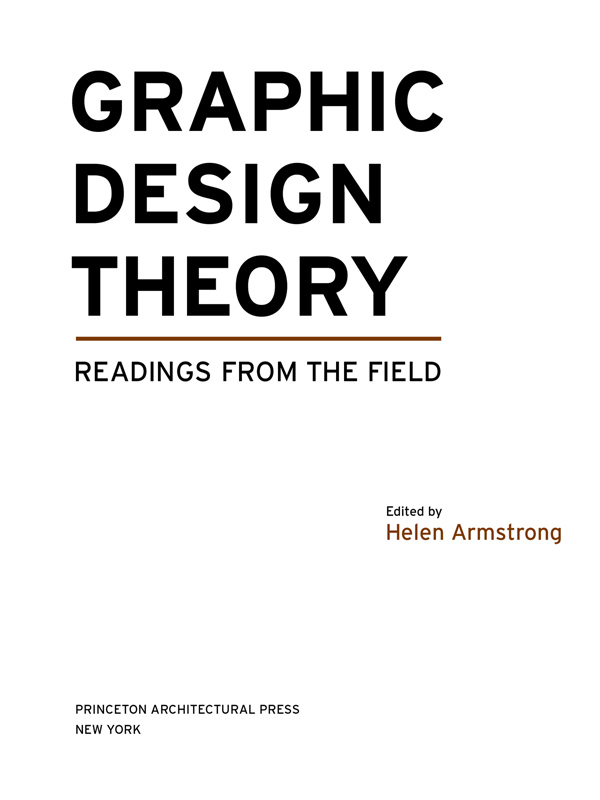
Published by
Princeton Architectural Press
37 East Seventh Street
New York, New York 10003
Visit our website at www.papress.com.
2009 Princeton Architectural Press
All rights reserved
12 11 10 09 4 3 2 1 First edition
No part of this book may be used or reproduced in any manner without written permission from the publisher, except in the context of reviews.
Every reasonable attempt has been made to identify owners of copyright. Errors or omissions will be corrected in subsequent editions.
This project was produced with editorial support from the Center for Design Thinking, Maryland Institute College of Art.
Design Briefs Series Editor: Ellen Lupton
Special thanks to: Nettie Aljian, Sara Bader, Nicola Bednarek, Janet Behning, Becca Casbon, Carina Cha, Penny (Yuen Pik) Chu, Russell Fernandez, Pete Fitzpatrick, Wendy Fuller, Jan Haux, Aileen Kwun, Nancy Eklund Later, Linda Lee, Aaron Lim, Laurie Manfra, Gina Morrow, John Myers, Katharine Myers, Lauren Nelson Packard, Jennifer Thompson, Paul Wagner, Joseph Weston, and Deb Wood of Princeton Architectural Press Kevin C. Lippert, publisher
Library of Congress Cataloging-in-Publication Data
Graphic design theory: readings from the field / edited by Helen Armstrong.
p. cm. (Design briefs)
Includes bibliographical references and index.
ISBN 978-1-56898-772-9 (alk. paper)
ISBN 978-1-61689-123-7 (digital)
1. Graphic arts. 2. Commercial art. I. Armstrong, Helen, 1971
NC997.G673 2008
741.6dc22
2008021063

Foreword
Why Theory?
ELLEN LUPTON, DIRECTOR
GRAPHIC DESIGN MFA PROGRAM, MARYLAND INSTITUTE COLLEGE OF ART
This book is an introduction to graphic design theory. Each selection, written in its own time and place across a century of design evolution, explores the aesthetic and social purposes of design practice. All of these writers wereor arevisual producers active in the field, engaged with the realities of creating graphic communication. Why did they pause from making their work and building their careers to write about what they do? Why should a young designer today stop and read what they wrote?
Theory is all about the question why? The process of becoming a designer is focused largely on how: how to use software, how to solve problems, how to organize information, how to get clients, how to work with printers, and so on. With so much to do, stopping to think about why we pursue these endeavors requires a momentary halt in the frenetic flight plan of professional development. Design programs around the world have recognized the need for such critical reflection, and countless designers and students are hungry for it. This book, carefully curated by emerging scholar and designer Helen Armstrong, is designed as a reader for history and theory courses as well as an approachable volume for general reading. Armstrong developed the book as graduate research in the Graphic Design mfa program at Maryland Institute College of Art, which has produced a series of collaboratively authored books. Hers is the first book from our program edited independently by a graduate student. Presented within its pages are passionate, intelligent texts created by people who helped build their field. These writers used their practical understanding of living processes and problems to raise philosophical, aesthetic, and political questions about design, and they used those questions, in turn, to inspire their own visual work as well as the work of people around them.
Design is a social activity. Rarely working alone or in private, designers respond to clients, audiences, publishers, institutions, and collaborators. While our work is exposed and highly visible, as individuals we often remain anonymous, our contribution to the texture of daily life existing below the threshold of public recognition. In addition to adding to the common beat of social experience, designers have produced their own subculture, a global discourse that connects us across time and space as part of a shared endeavor, with our own heroes and our own narratives of discovery and revolution. Few members of the general public are aware, for example, of the intense waves of feeling triggered among designers by the typeface Helvetica, generation after generation, yet nearly anyone living in a literate, urbanized part of the world has seen this typeface or characters inspired by it. Design is visible everywhere, yet it is also invisibleunnoticed and unacknowledged.
Creating design theory is about building ones own community, constructing a social network that questions and illuminates everyday practicemaking it visible. Many of the writers in this book are best known for their visual work; others are known primarily as critics or educators. But in each case, a living, active connection to practice informs these writers ideas. Each text assembled here was created in order to inspire practice, moving designers to act and experiment with incisive principles in mind. El Lissitzky, whose posters, books, and exhibitions are among the most influential works of twentieth-century design, had a huge impact on his peers through his work as a publisher, writer, lecturer, and curator. In the mid-twentieth century, Josef Mller-Brockmann and Paul Rand connected design methodologies to the world of business, drawing on their own professional experiences. Wolfgang Weingart, Lorraine Wild, and Katherine McCoy have inspired generations of designers through their teaching as well as through their visual work. Kenya Hara has helped build a global consumer brand ( MUJI ) while stimulating invention and inquiry through his work as a writer and curator.
A different kind of design theory reader would have drawn ideas from outside the fieldfrom cognitive psychology, for example, or from literary criticism, structural linguistics, or political philosophy. Designers have much to learn from those discourses as well, but this book is about learning from ourselves. Why theory? Designers read about design in order to stimulate growth and change in their own work. Critical writing also inspires new lines of questioning and opens up new theoretical directions. Such ideas draw people together around common questions. Designers entering the field today must master an astonishing range of technologies and prepare themselves for a career whose terms and demands will constantly change. There is more for a designer to do now than ever before. There is also more to read, more to think about, and many more opportunities to actively engage the discourse. This book lays the groundwork for plunging into that discourse and getting ready to take part.
Acknowledgments
The idea for this book sprang from conversations I had with Ellen Lupton as I prepared to teach a course in graphic design theory at the Maryland Institute College of Art in Fall 2006. In her roles as director of micas Center for Design Thinking and micas Graphic Design mfa program, Ellen provided invaluable guidance throughout the project. The Center for Design Thinking works with mica students and faculty to initiate publications and other research projects focused on design issues and practices.
As both a student and a teacher at mica, I have profited from the sheer dynamism of its Graphic Design mfa program. Special thanks go to my classmates, as well as the programs associate director, Jennifer Cole Phillips. I also recognize my own students, who provided a strong sounding board, allowing me to vet each stage of this book within the classroom. Gratitude is due, as well, to readers of my introduction, particularly art historian Tai Smith. Her contemporary art seminar helped contextualize issues of anonymity and collectivism so important to graphic design. And, finally, thanks to the research staff of micas Decker Library, particularly senior reference librarian Katherine Cowan.
Next page
